Making agile projects measurable & predictable
Agile transformation enables companies to enhance flexibility and ability to quick change, adaptability, achieving faster time-to-market and increased customer satisfaction with customer-centric approach.
Efficient metering and early warning systems based on precise AI-predictions are a game changer and ensure that agile transformation journey stays on track towards desirable results and significantly improve the outcome ensuring competitive advantage for product development and providing full transparency on performance, outcomes, efforts allocation, release forecasts, etc on all levels and end-to-end.
We define actionable metrics, implement them, build and customize reporting solutions and forecasting models to keep agile programs transparent and accurately predictable.
Agile Intelligent Services: Key Benefits
Making agile projects measurable
Actionable end-to-end metrics on all process stages, levels, roles making project traction easy
Increased transparency & insights
Transparency & actionable insights on agile initiatives on all levels, teams, strategic topics
Improved agile delivery predictability
Improved predictability of agile delivery by precise data-driven forecasts (AI & ML-based)
Establish 360 degree transparency in agile product development
We assist you in establishing transparency & tracking of scope progress, roadmap and single requirements along exploration, elicitation, refinement, development, QA and deployment. Overview of committed and delivered business value. You benefit from transparency on arrival rates, backlog throughput etc.
We measure, track and forecast metrics of teams operational performance (velocity, throughput, committed vs. delivered story points, scope working %, etc) to keep development on track and make precise predictions. Stability over time makes product development predictable and allows to detect issues on early stages.
You benefit from early checks of the product by receiving a complete overview on bugs/defects handling per team, capability, feature in operations as well as in QA, defining and applying metrics like resolution rate, defect severity, time, detection rate, test effectiveness & coverage, open/closed rates, etc)
Collection and tracking of one of the most important agile metrics: customer voice metrics like Customer Satisfaction (CSAT), Net promoter score (NPS), at every customer touchpoint to convert feedback into backlog features. Derivation of main customer satisfiers/dissatisfiers and tracking of key facets like product & service quality, improvements & responsiveness, value for money, easy of use etc.
KEY FEATURES
Metrics, reports, dashboards
- Requirement analysis for agile reporting, process analysis
- Definition key metrics and measure points of agile development process (process efficiency, flow, output and outcome metrics)
- End-to-end metrics & KPI taxonomy
- Creation of actionable reports and dashboards giving insights and real picture of the progress (Jira, MS PowerBI, SAP SAC, tableau, etc)
- Definition of critical agile reporting areas and audiences / frequencies for consumption
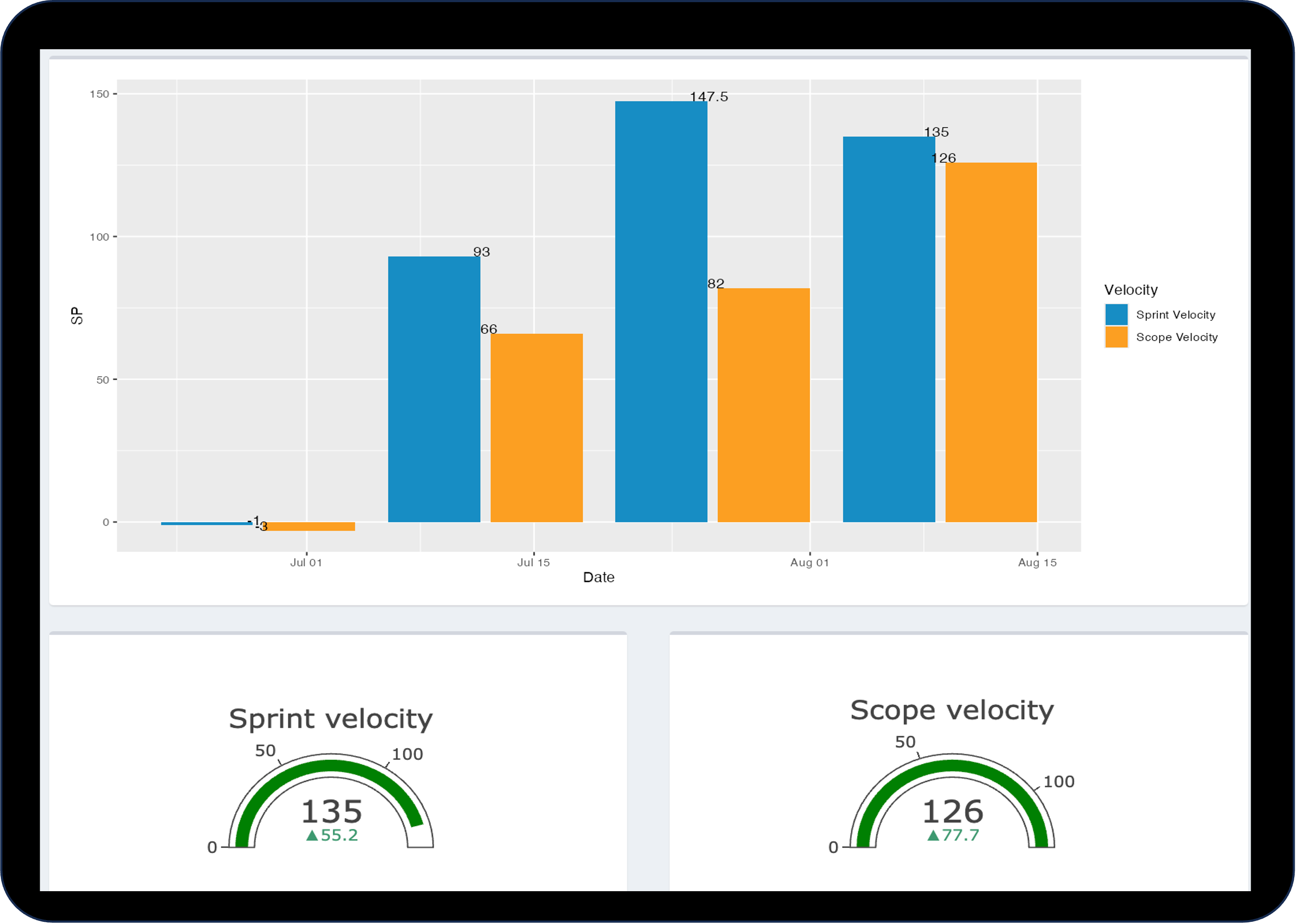
Visualize progress
- Key metrics insights: sprint burndowns, velocity, throughput, etc
- Handling of scope – sprint velocity vs scope velocity, scope creep early detection
- Omni-level reporting (teams, ARTs): output, outcome, flow
- Progress towards next release, identifying teams waste, etc.
- Visualizing product roadmap (increment/release/sprint/iteration – results or plans
- Visualizing effort distribution by issue types, CFDs, etc
- Value delivery (features, value points)
- Monitoring setup (backlog health-check)
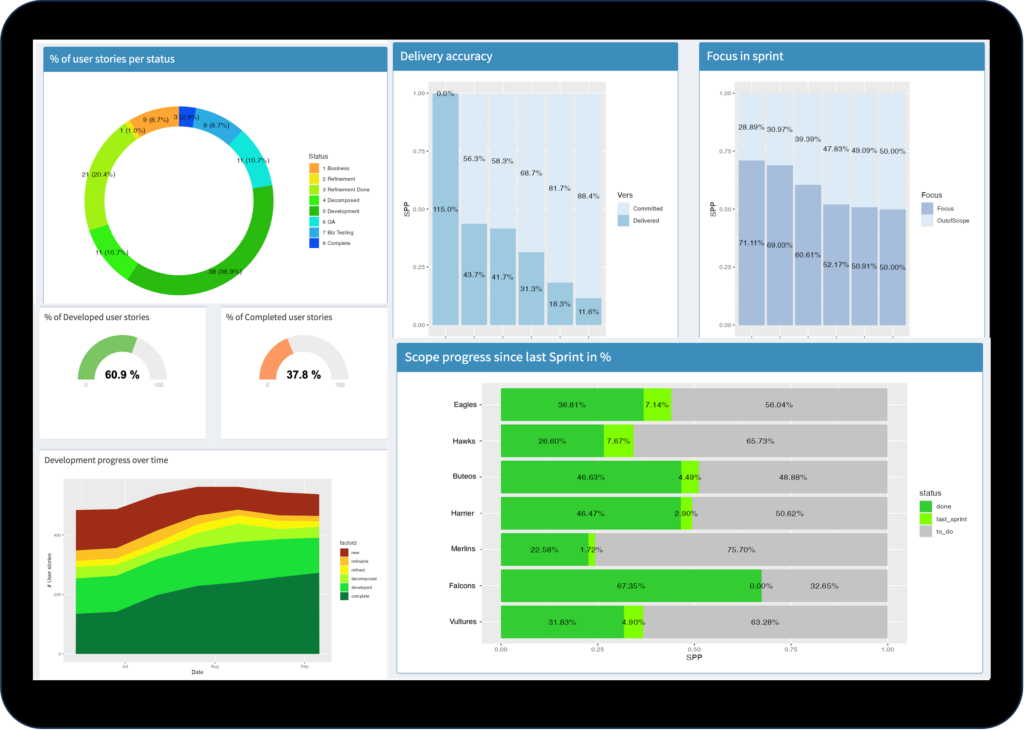
AI-based forecasts on key metrics
- Develop, train & deploy AI-models for accurate prediction of key metrics enabling of precise forecasts and decision making far in advance
- Use AI-predictions and integrate it into agile processes like iteration planning, capacity or resource utilization planning, agile estimations, etc.
- Build accurate AI-forecasts of scope completion towards next release/iteration date for stakeholder communication
- Achieving preciser roadmap planning due to combination of forecasts with adopted estimation techinques (T-shirt sizing, story points etc)
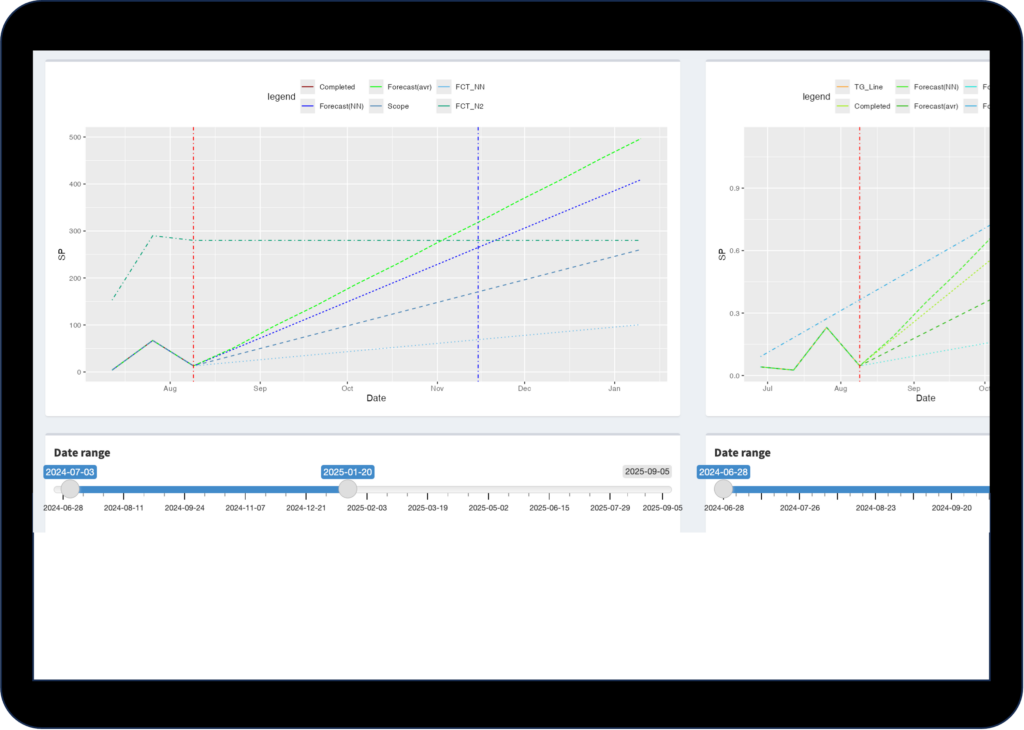
Analytical tool selection & customizing
- Requirements assessment and reporting tool evaluation
- Customizing of reports and dashboards in agile operational tools (jira atlassian, etc)
- Providing our own best practice report templates on inteltarget.com dashboards platform (from team up to ART and portfolio reportings)
- Development of tailored dashboards on inteltarget.com or customer platform
- Maintenance and ad-hoc reporting customizing (Microsoft Power BI, SAP SAC, tableau, plotly, own developments)
- Operationalization of reporting & derivation of actions
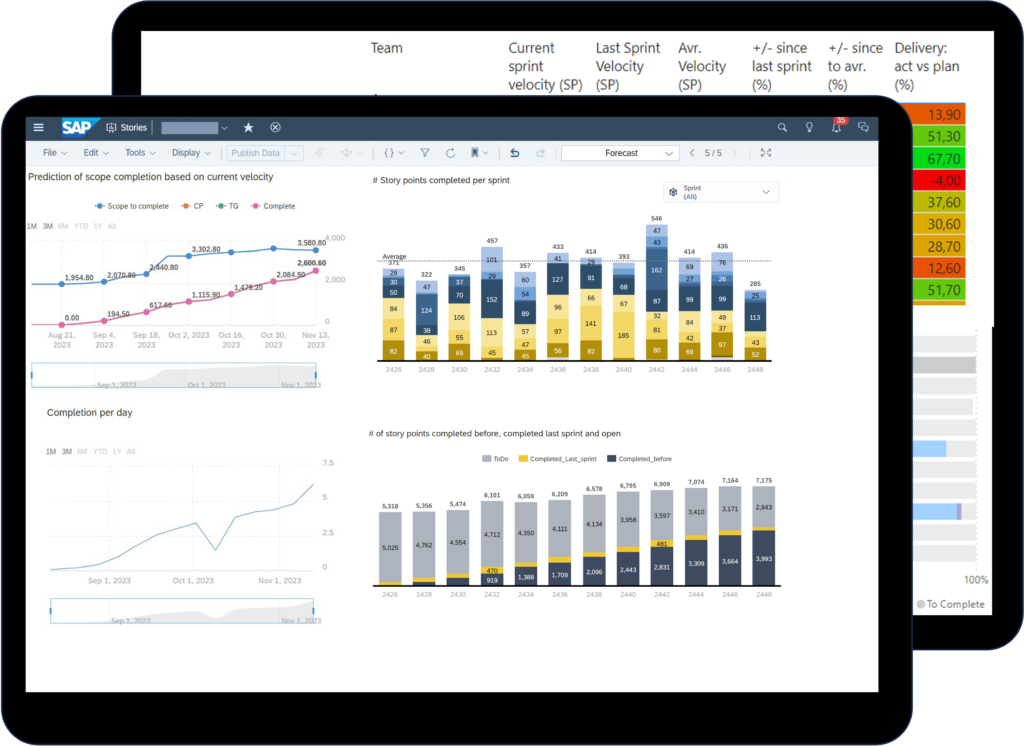
AGILE INSIGHT AREAS
Discover areas which bring you insight & transparency in product development cycle
- How fast do the teams deliver their work? Number of delivered story points, user stories, features per sprint, release, increment
- Are there any trends / patterns in teams velocity over sprints?
- How fast are teams processing their scope? Focus & efficiency
- What is the ratio of work on scope/work on defects, operations/maintenance, waste?
- Do teams deliver what they commit, what is their predictability / sprint success ratio (committed vs. delivered)?
- What is our sprint burn-down?
- Which of the teams perform better and which are more efficient?
- What is the progress on iteration / release scope (sprint by sprint)?
- What is the current flow load?
- What is the distribution of my features across workflow stages (CFD / Cumulated Flow Diagram)?
- What is the number of added/outscoped features in release/increment (spill-overs)?
- Status of the features in scope. Status tracking
- What is the iteration progress (burn-up)
- What is the progress on features/epics/user stories (sprint by sprint)
- What is team capacity for the next sprint/iteration?
- What is the forecast on iteration scope delivery given the average and forecasted velocity?
- What amount of work teams will be capable to deliver in the next iteration?
- Will teams manage to deliver the scope in time?
- If not what should be the actions?
- What is the forecasted increment burn-up?
- Which teams are overplanned, how heavily and which have free capacity?
APPROACH & SERVICES
Define objectives & metrics
We assist you in initial process analysis, key metrics and KPI definition, data preparation, clean-up and collection process
- Analyze process, audiences, stakeholders
- Define reporting levels, structures, cadences
- Define of measurement points & metrics
- Define metrics tresholds, tolerances, actions
- Analyze & prepare data sources
Measure, visualize & explore
We build reports & dashboards on various levels, aggregations, planning horizons (sprints, releases), topic structures etc.
- Building reports, scorecards, dashboards
- Measure team dynamics (velocity, throughputs, etc)
- Measure scope delivery and bias
- Integrate analytics into operations
- Set-up & customize analytical tools
AI-based predictions & plan
You benefit from using AI-based predictions and their integration into forecasts & planning processes enabling to react far in advance
- Data clean-up and modelling
- Data driven capacity & scope planning
- AI-based models for precise forecasts
- Predict burn-down rates, velocity, etc
- Early predictions of roll overs
Enable, support & improve
Stakeholder enablement and adoption, action derivation, support and continuous improvement and adjustments
- Ensure adoption & improve usability
- Testing feedback & Training
- Enablement & change management
- Monitor and improve continuously
- Measure impact & value
frameworks we support
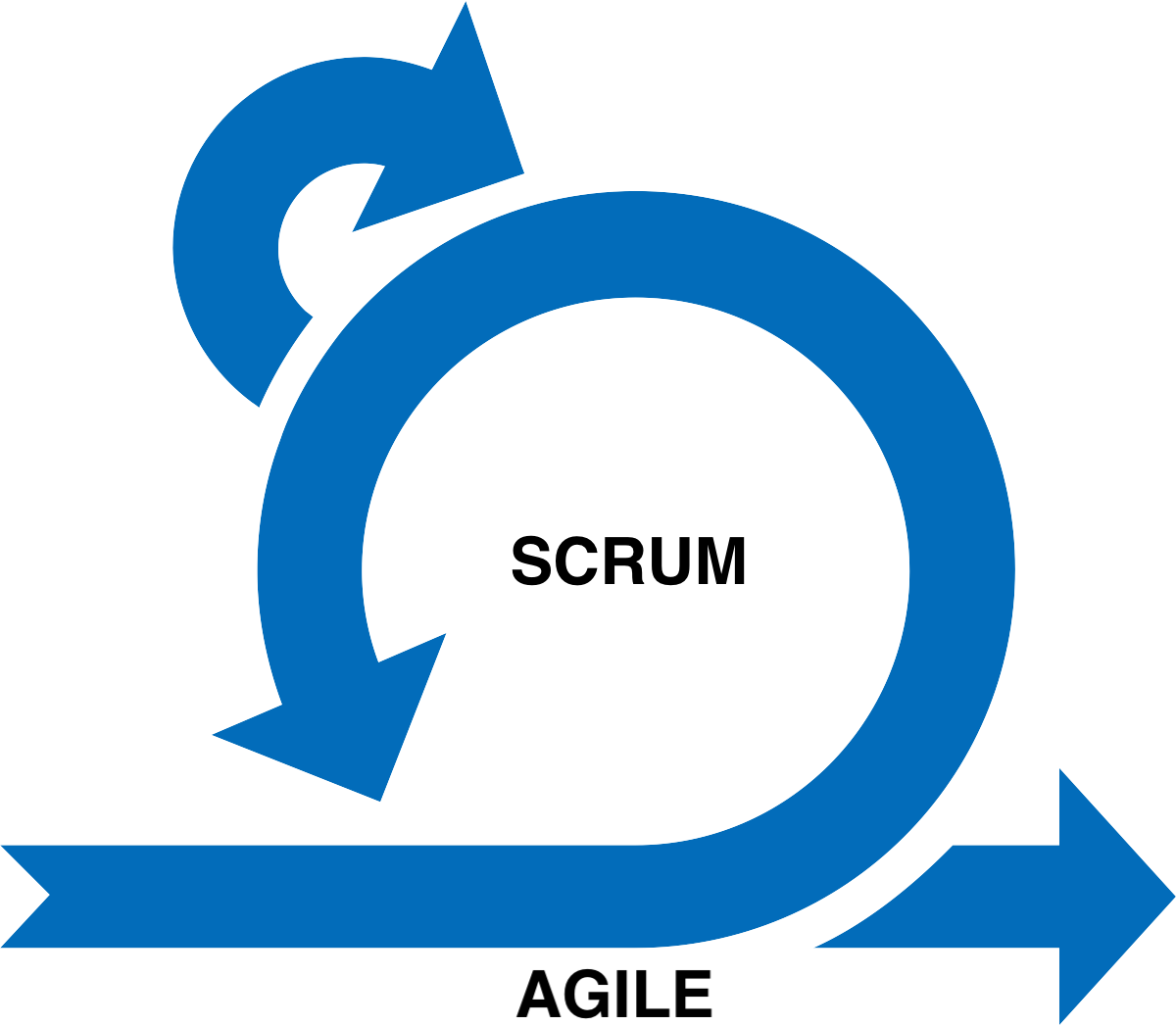
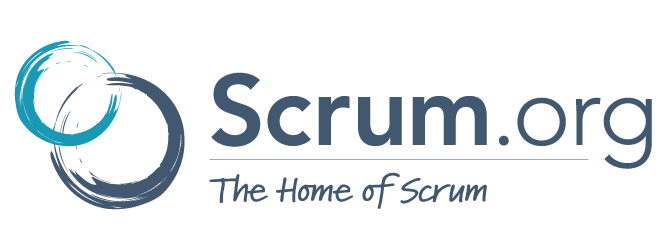
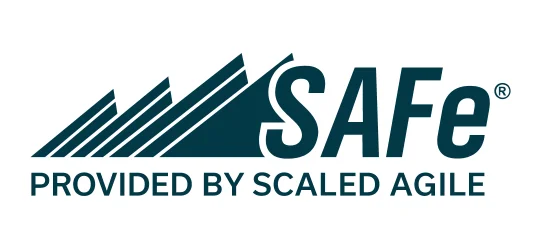
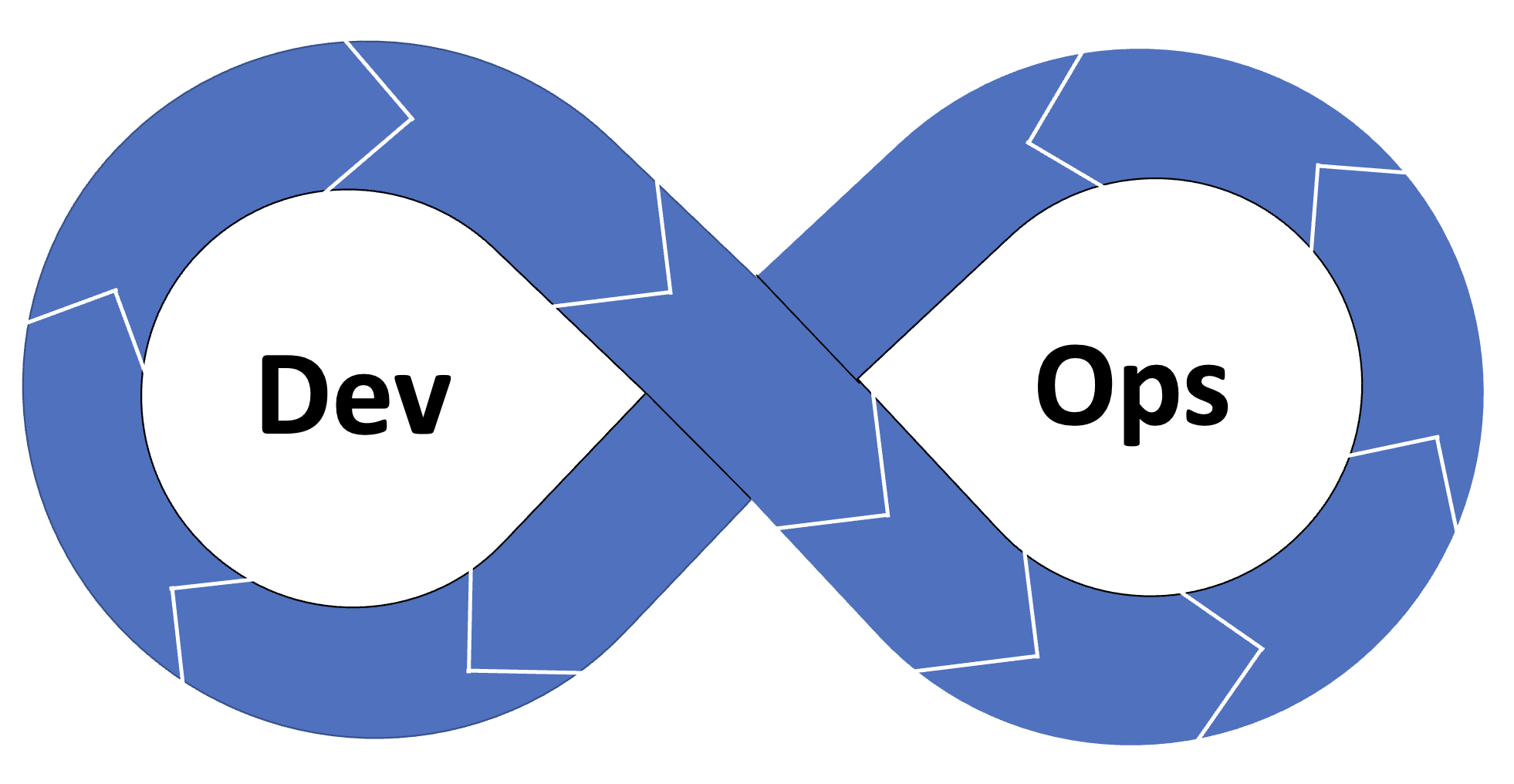
selection of tools & assets we use










